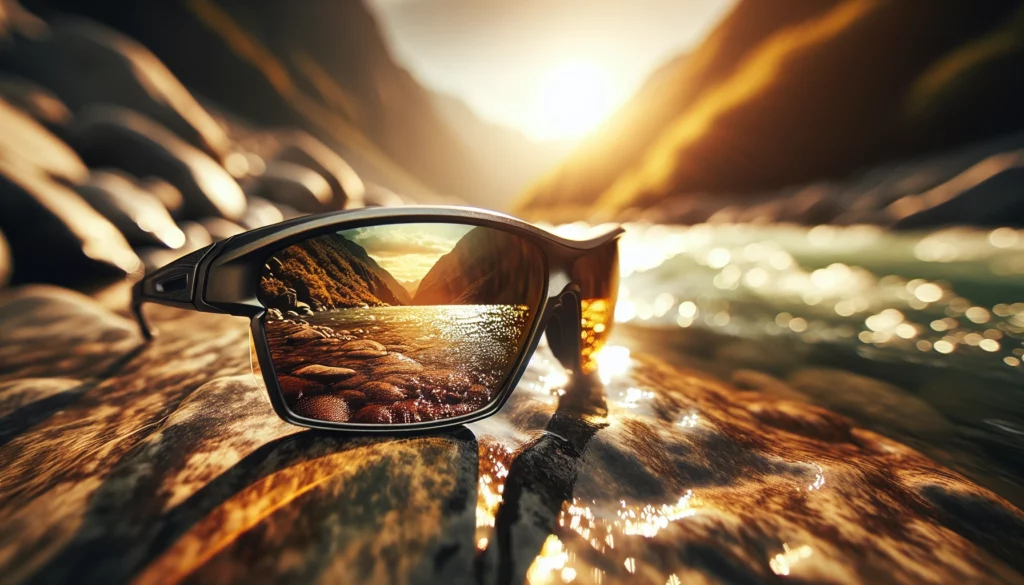You want sunglasses that protect your eyes, enhance your vision, and fit your lifestyle—whether you’re driving, fishing, or just enjoying a sunny day. At Kssmi, we’ve spent decades crafting premium eyewear to meet those needs. As Jack Gou, with 20 years designing lenses, I’ll guide you through the differences between polarized and photochromic lenses to help you choose the perfect pair.
What Are Photochromic and Polarized Lenses?
Photochromic Lenses: Your All-in-One Solution
Photochromic lenses adapt to light, darkening outside in sunlight and staying clear indoors. They’re ideal if you want one pair of glasses for both everyday wear and sun protection without juggling multiple pairs.
How Photochromic Lenses Work
These lenses contain light-sensitive molecules that react to UV rays, darkening in about 30 seconds outdoors. When UV light fades, they return to clear in a few minutes. At Kssmi, we prioritize fast-reacting dyes for crisp vision during transitions.
Why Choose Photochromic Lenses?
Here’s what makes photochromic lenses a game-changer for daily wear:
- Convenience: One pair serves as both eyeglasses and sunglasses.
- UV Protection: Blocks 100% of harmful UVA and UVB rays, clear or dark.
- Blue Light Filtering: Reduces eye strain from screens and artificial light.
- Versatility: Perfect for frequent indoor-outdoor transitions.
Good to Know: Brands like Transitions® are popular photochromic lenses, but the technology is available in many forms. Think of it like calling all tissues “Kleenex.”
Limitations to Understand
Photochromic lenses have a few quirks:
- Car Performance: Most don’t darken well in cars since windshields block UV rays.
- Temperature Sensitivity: They get darker in cold weather but may not reach full tint in heat.
- Transition Time: Fading back to clear can take 2-5 minutes indoors.
Helpful Tip: If driving is a priority, ask about lenses like Transitions XTRActive, designed to darken slightly behind windshields.
Polarized Lenses: Glare-Busting Clarity
Polarized lenses are built to cut glare from reflective surfaces like water, snow, or roads. They’re a must for activities where bright reflections could strain your eyes or obscure your view.
How Polarized Lenses Work
Polarized lenses act like tiny vertical blinds, blocking horizontal light waves that cause glare. This lets only useful light through, sharpening your vision. I’ve seen firsthand how this technology transforms visibility for anglers and drivers.
Why Choose Polarized Lenses?
Polarized lenses shine in specific scenarios:
- Glare Reduction: Eliminates up to 99% of reflections from water, snow, or pavement.
- Enhanced Clarity: Boosts contrast and color for better detail, like spotting fish or road hazards.
- UV Protection: Quality pairs block 100% UVA/UVB rays—check for “UV 400” labels.
- Fixed Tint: Consistent darkness for reliable sun protection in bright conditions.
Limitations to Understand
Polarized lenses aren’t perfect for every situation:
- Screen Viewing: Can darken or distort LCD screens on phones or dashboards.
- Fixed Darkness: Too dark for low-light or indoor use, requiring a second pair.
- No Light Adaptation: Unlike photochromics, they don’t adjust to changing conditions.
Critical Warning: If you rely on digital screens while driving, test polarized lenses first to ensure dashboard visibility.
Comparing Photochromic vs. Polarized Lenses
To make your decision easier, let’s break down how these lenses stack up across key factors.
| Feature | Photochromic Lenses | Polarized Lenses |
|---|---|---|
| Light Adaptation | Adjusts tint based on UV exposure | Fixed tint, no adjustment |
| Glare Reduction | Minimal, reduces overall brightness | Eliminates 99% of reflective glare |
| Convenience | One pair for indoor/outdoor use | May need clear glasses for indoors |
| Car Performance | Limited darkening behind windshields | Reliable glare reduction for driving |
| Screen Viewing | Clear indoors, no screen issues | May distort LCD screens |
| Cost | $75-$400, often pricier | $50-$400, varies by brand |
Key Benefit: Photochromic lenses simplify your life with one versatile pair, while polarized lenses excel at cutting glare in high-reflection environments.
When Photochromic Lenses Are Best
Photochromic lenses are your go-to if:
- You want one pair for reading indoors and sun protection outside.
- You’re sensitive to light (photophobia) and need gradual tint changes.
- Your day involves constant indoor-outdoor shifts, like commuting or errands.
- You cycle or run through mixed lighting, like tunnels or shaded trails.
For Your Safety: If your photochromic lenses don’t darken enough in your car, keep prescription sunglasses handy for driving.
When Polarized Lenses Are Best
Choose polarized lenses if:
- You fish, boat, or kayak, needing to see beneath water’s surface.
- You drive in bright sunlight, facing glare from roads or windshields.
- You ski or snowboard, where snow glare can cause discomfort or blindness.
- You run or relax on beaches, dealing with intense pavement or sand reflections.
Helpful Tip: For water sports, pair polarized lenses with wraparound frames to block side light.
Can You Get Both?
Yes! Lenses like Transitions XTRActive Polarized combine photochromic and polarized tech, darkening in light and cutting glare. They’re pricier but offer the best of both worlds, especially for versatile outdoor use. At Kssmi, we’re excited about these hybrid options for their all-around performance.
Other Sunglass Features to Consider
Beyond lens type, these factors ensure your sunglasses meet your needs.
UV Protection: Non-Negotiable
Always choose lenses labeled “100% UVA/UVB” or “UV 400.” UV exposure can lead to cataracts or eye growths, so this is critical for long-term eye health.
Lens Tint and Darkness
Visible Light Transmission (VLT) measures how much light passes through:
- 0-19% VLT: Dark tints for bright sun, like beaches or snow.
- 40%+ VLT: Lighter tints for overcast or low-light activities.
Match tint to your main use—dark for sunny days, moderate for variable conditions.
Lens Colors
Tints affect vision and comfort:
- Gray/Green: Neutral colors, great for everyday use with minimal distortion.
- Brown: Enhances contrast, ideal for driving or golf.
- Yellow/Amber: Boosts contrast in low light, perfect for snow sports or dusk.
Good to Know: Some tints claim to cut haze for skiers or pilots, but benefits vary—test them for your needs.
Lens Materials
Your lifestyle dictates material choice:
- Polycarbonate: Lightweight, impact-resistant for sports, needs scratch coatings.
- Glass: Crystal-clear but heavy, shatters easily, less ideal for active use.
- Acrylic: Budget-friendly but less durable and clear.
Helpful Tip: Always opt for scratch-resistant coatings, especially for polycarbonate lenses.
Frame Fit and Style
A good fit ensures comfort and performance:
- Snug Fit: No pinching or slipping, lenses aligned with your eyes.
- Materials: Metal for durability, nylon for sports, acetate for style.
- Wraparound Frames: Block side light for driving or water sports.
Talk to Your Optometrist
Your eye doctor can tailor recommendations to your vision, prescription, and lifestyle. Both lens types come in prescription options, including bifocals or progressives, so discuss what works best for you.
Frequently Asked Questions (FAQs)
1. Can I get lenses that are both photochromic and polarized?
Yes, options like Transitions XTRActive Polarized combine both technologies, adapting to light and reducing glare. They’re a premium choice but ideal for versatile protection.
2. Why don’t my photochromic lenses darken in the car?
Most windshields block UV rays, preventing standard photochromic lenses from darkening. Specialized lenses like Transitions XTRActive react to visible light, offering better in-car performance.
3. Are polarized lenses always better for driving?
Polarized lenses excel at reducing road glare in bright sunlight, but they may darken LCD screens and be too dark for low-light driving. Test them for your needs.
4. Do dark or polarized lenses automatically block UV rays?
No, darkness doesn’t equal UV protection. Always check for “100% UVA/UVB” or “UV 400” labels to ensure your lenses shield your eyes.
5. How does temperature affect photochromic lenses?
Cold weather makes lenses darken more and fade slower, while heat can limit maximum darkness. Expect slower fading (2-5 minutes) in cold conditions.


